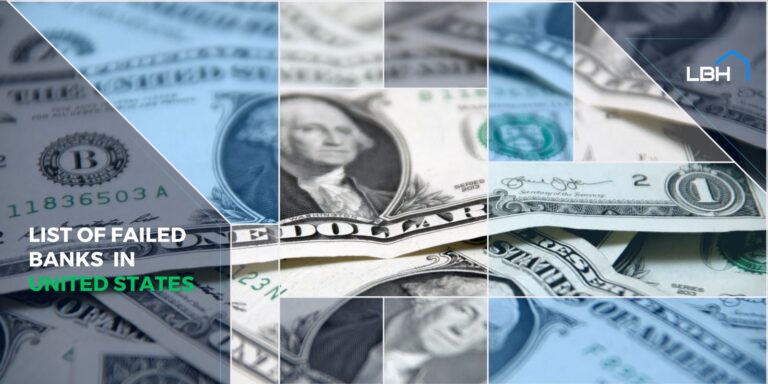In the realm of personal finance and homeownership, one financial strategy has stood the test of time as a powerful tool for homeowners looking to leverage their most valuable asset — their home.
For homeowners, your property isn’t just a place to hang your hat; it’s a treasure trove of potential financial opportunities.
A cash out refinance may be one such opportunity that allows homeowners to tap into the equity line of credit they’ve built up in their homes over the years.
Whether you’re looking to fund a home improvements, consolidate high-interest debt, invest in education, or meet any other financial goal, a cash-out refinance can offer a solution.
In this article, find out how cash out refinance works: what it means, benefits, drawbacks, and everything in between.
How Does a Cash Out Refinance Work?
A cash-out refinance is a financial transaction in which a homeowner refinances their existing mortgage with a new one that has a higher principal balance, allowing them to receive a portion of their home equity in the form of cash.
Here’s how it works:
- Mortgage refinance: You start with an existing mortgage on your home, which you’ve been paying down over time.
- New mortgage: You apply for a mortgage refinance with better terms (e.g., lower interest rate or longer repayment period) than your current one. This new mortgage has a higher principal balance than your existing one.
- Cash withdrawal: The difference between the new and old mortgage amounts is given to you in cash. For example, if your current mortgage balance is $100,000, and you refinance for a new mortgage of $150,000, you could receive $50,000 in cash at closing.
Who Is a Good Candidate for a Cash-Out Refinance?
A cash-out refinance can be useful for some homeowners and those wanting to start a business. Still, it’s not the right choice for everyone. Whether you’re a good candidate for a cash-out refinance depends on your financial goals, your current mortgage repayment terms, and your ability to manage the new mortgage.
Here are some scenarios where a cash-out refinance might be suitable:
- Home renovation projects: If you plan to make significant home improvements or renovations that will increase the value of your property, a cash-out refinance can provide the funds necessary for these projects. This can be a good investment if the expected increase in your home’s value outweighs the cost of the refinance.
- Debt consolidation: If you have high-interest debt, such as credit card balances or personal loans, and can secure a lower interest rate through a cash-out refinance, it may make sense to consolidate that debt into your mortgage refinancing. This can help you pay off your debts more efficiently and potentially reduce your overall interest expenses.
- Education expenses: If you or your child is pursuing higher education, a cash-out refinance can provide funds to pay for college tuition fees and related expenses. However, consider the interest rates and terms of student loans before using this method.
Benefits of a Cash-Out Refinance
Here’s why diving into a cash-out refinance is worth your consideration.
Lower Monthly Payments
If you’re stuck with a high-interest mortgage, a cash-out refinance can be a lifeline for lower monthly payment. While it’s true that cash-out refinance rates are typically a bit higher than those for rate and term refinancing, there’s a silver lining.
If mortgage rates were high when you first bought your home, a cash-out refinance might still get you a better interest rate. However, if your primary goal is to secure a lower interest rate on your mortgage refinancing and you don’t need extra cash, then a refinance might be the more sensible choice.
Access to Cash
Have you ever thought about giving your finances a little boost? Well, a cash-out refinance can be your financial superhero. It enables you to get access to cash that you can use for sprucing up your home, getting a handle on debts, or covering those unexpected expenses.
The good news is that you can often tap into a much bigger pool of money compared to what you can do with personal loans or maxing out your credit cards.
Refinance to a Shorter Term
When you go for a cash-out refinance, you’re saying goodbye to your old mortgage and swapping it out for a shiny new loan. Now, if you’re eager to bid adieu to your primary mortgage sooner, you can take the plunge and refinance to a shorter term.
Brace yourself for higher monthly mortgage payments, but the good news is that you’ll get less interest in the long run. Just remember to dive into the nitty-gritty details in that closing disclosure your lender gives you and check your new loan terms before sealing the deal.
Get Rid of Private Mortgage Insurance (PMI)
If your loan-to-value ratio (LTV) is below 80%, you could kick PMI to the curb. PMI is like that annoying extra fee lenders tag on when you don’t have at least 20% home equity. So, if you’ve reached the 80% mark, you can quickly get rid of private mortgage insurance (PMI) and save some cash.
Tap Home Equity Loan Advantages
When you go for a cash-out refinance, you’re likely to snag a lower interest rate compared to what you’d get with a home equity loan or a Home equity line of credit (HELOC). Now, a home equity loan and HELOCs are two other ways to tap into your home equity.
But if you’re pondering which path to take, remember that cash-out refinance rates typically come as the more wallet-friendly option. So, if you’re all about saving those hard-earned dollars, cash-out refinancing might be the way to go!
Drawbacks of a Cash-Out Refinance
While cash-out refinances come with some perks, they’re not all sunshine and rainbows. Here are some of the not-so-great aspects:
Higher Interest Rates
The interest rate on a cash-out refinance usually comes in higher than the rate you’d get with a regular refinance. Why? Well, cash-out refinances can be a tad riskier for the lender. So, even if you’re diving into a new 30-year mortgage, that higher rate could potentially tack on extra years of payments, and you might end up forking out a hefty sum in interest, even if you manage to lower your rate. It’s a bit of a trade-off.
Be Aware of Closing Costs
When you dive into a cash-out refinance, you’re not off the hook when it comes to closing costs. They’re part of the package, just like with any refinance. But here’s the kicker: the closing costs for a cash-out refinance tend to be a bit heftier than those for a run-of-the-mill refinancing.
So, while you might be counting your savings with the refinance itself, don’t forget that these costs are in the mix and could reduce your benefits or make them less potent.
In fact, you might pay closing costs and fees which are higher compared to other options. For instance, some home equity loans offer low-fee ways to tap into your home’s equity. And if you’re all about keeping your expenses down, unsecured options like credit cards might look pretty appealing. So, when it comes to closing costs, be sure to weigh your options carefully.
Longer Repayment Term
Opting for a cash-out refinance might stretch out your loan’s repayment timeline, and that may translate into shelling out more in interest over the long haul. Let’s break it down: If you switch from a 30-year mortgage refinancing to a 15-year one, your monthly payment is likely to go up. Why? Because you’re cutting down the time you have to repay the loan.
Here’s an example: You’ve got a 30-year mortgage of $200,000 with a 4% interest rate. Currently, your monthly payment is a manageable $954 (not including escrow). Now, you decide to refinance into a 15-year mortgage, still at the same 4% interest rate, but your new monthly bill jumps to $1,479. Even if you snag a lower interest rate, your monthly payment might still take a hike.
Increased Risk of Default
A cash-out refinance could increase your risk of default and potential foreclosure. Higher monthly payment, added private mortgage insurance, or a raised interest rate might strain your budget, making it tougher to meet payments. So, before you go for it, carefully assess if a cash-out refinance might strain your finances, risking your home in the process.
How to Get a Cash-Out Refinance
Here is the cash out refinance process:
- Get Pre-Approved for a Loan
Before you embark on the cash-out refinance journey, securing a mortgage pre-approval is your initial checkpoint. A mortgage pre-approval letter serves as confirmation from a lender that you possess the financial means to qualify for a specified mortgage refinancing. It signifies your commitment to the process and your financial readiness for it.
To obtain this pre-approval, you’ll need to provide your financial details to a mortgage refinancing lender. They’ll carefully assess your information to ensure you meet the criteria for the mortgage refinance you’re aiming for. Here’s a checklist of the financial documents you possess for pre-approval:
- Proof of income (like pay stubs and W-2s)
- Proof of assets (think bank or brokerage account statements)
- Your most recent tax return
- A breakdown of any outstanding debt
- Your employment status, including details about your job and how long you’ve been there
A pre-approval provides insight into the loan amount you can secure and the interest rate you can expect. It’s also crucial to explore pre-approval options with various mortgage lenders, but try to do it within a relatively short time frame.
When a lender performs a hard credit check as part of the pre-approval process, it can temporarily lower your credit score. However, if you gather multiple pre-approvals within a few days, credit agencies typically treat them as a single inquiry, which is actually better for your overall credit score.
- Shop Around for the Best Interest Rate and Terms
Before making any decisions, it’s crucial to compare the interest rates and terms offered by different lenders. You might stumble upon a better deal if you explore various lender options.
Keeping an eye on national averages and advertised rates can provide valuable insights into the ever-shifting mortgage market, especially when you consider the historical fluctuations in rates over time. It also increases your chances of snagging an optimal rate and helps you find the lender that perfectly aligns with your unique needs and preferences.
- Compare Closing Costs
Compare closing costs before making your decision. These costs can vary depending on your lender, location, and loan amount but typically fall between 2% and 6% of the total loan amount.
The most significant part of these costs is usually the origination fee, typically around 1% of your mortgage. Additionally, you might encounter other expenses such as appraisal fees, credit check charges, potential mortgage insurance, title services, notary fees, and recording fees.
After selecting a lender, you’ll receive a closing disclosure three days before your loan’s finalization. This document outlines all the charges you’ll incur during the signing, ensuring there are no surprises during the closing process.
Make Sure You Understand All the Fees and Charges
Before signing, understand all loan fees, including:
- Discount points: Paying for discount points to lower your mortgage rate may be wise for long-term homeowners. However, consider how it affects your break-even point.
- Origination fees: Lenders charge origination fees for loan processing and credit reports. These are negotiable, so discuss them with your lender.
- Appraisal and inspection fees: Expect a home appraisal fee. If your home’s value has increased, a new appraisal might be worth it.
- Mortgage and title insurance fees: If you have a conventional mortgage with less than 20% down, you’ll likely pay for private mortgage insurance (PMI). Title insurance varies because of factors like loan value, down payment, and location.
Additional Considerations for Cash-Out Refinance Loan
The impact of a cash-out refinance on your credit score: Cash-out refinances can adversely affect your credit score due to the replacement of old debt with a new loan and the potential increase in your credit utilization ratio, which makes up 30% of your FICO credit score.
However, with responsible financial management, including on-time payments on the new loan and wise use of the cash-out funds, the damage can be mitigated over time, potentially leading to credit score improvements.
The tax implications of a cash-out refinance: Borrowers can potentially benefit from mortgage interest tax deductions if the proceeds from the cash-out refinance are allocated towards property enhancements.
A few examples of home improvements that may qualify for mortgage interest tax deductions include adding new sections to your home, installing a home security system, replacing your HVAC system, addressing roofing repairs, and constructing decking and fencing.
The impact of a cash-out refinance on your debt-to-income ratio (DTI): Utilizing a cash-out refinance loan when you already have a current mortgage can be a strategic move to reduce your debt-to-income ratio (DTI).
This involves tapping into your home’s equity to settle your debts and consequently lower your DTI.
The different types of cash-out refinance loans available: Homeowners have three primary cash-out refinance alternatives to explore, including:
- Conventional Loans: A conventional cash-out refinance allows you to borrow up to 80% of your home’s value, typically requiring a minimum credit score of 620.
- FHA Loans: An FHA cash-out refinance enables you to borrow up to 80% of your home’s value. This option involves upfront fees, which can be rolled into the loan, along with an annual mortgage insurance fee, similar to what’s required for new FHA mortgages. It requires a credit score of at least 600.
- VA Loans: A VA cash-out refinance allows you to borrow up to 100% of your home’s value, though some lenders may impose an LTV cap at 90%. VA cash-out refinance loans come with upfront fees, except for veterans with service-related disabilities.
The Latest Trends in Cash-Out Refinancing
Here are some cash-out refinancing trends:
- Average rates: The average interest rate for cash-out refinancing in 2023 ranges between 5% and 7%. This means borrowers can expect to pay an interest rate within this range when refinancing their mortgage to take out additional cash. However, interest rates can vary based on individual circumstances and market conditions.
- Comparison shopping: Homeowners are shopping around and comparing cash-out refinance offers from multiple lenders. By exploring different options, borrowers can secure a better deal with more favorable terms, such as lower interest rates or reduced fees.
- Home improvements: Homeowners are using cash-out refinancing to pay for home improvements. By refinancing their mortgage and taking out additional cash, homeowners can invest in renovations, upgrades, or repairs for their property. This trend is driven by the desire to increase home value, enhance livability, and address maintenance issues.
Is a Cash-Out Refinance Worth It?
A cash-out refinance can be a smart financial move for debt consolidation debt, paying for home improvement, or covering unexpected expenses with a lower interest rate than unsecured loans typically offer. It also provides the flexibility of an extended repayment period, potentially reducing your monthly payments.
However, it’s crucial to be comfortable with the trade-off of replacing your original loan with a new one, often at a slightly higher interest rate. Additionally, keep in mind that closing costs, similar to those in a home purchase, can impact your overall interest savings, so it’s essential to evaluate the potential benefits against the costs.












